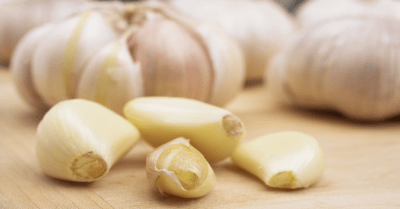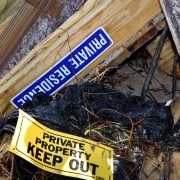Eating Out When You Have Mold Issues
Just what can you eat if the foods in your favorite restaurant are fungi’s favorite snack?
Why is this important? The goal is to stop feeding fungus/mold in your system by avoiding foods, like grains and sugars, that help it thrive in your body.
However, you don’t have to give up eating out entirely. Be sure to read the ingredients listed on the menu, ask your waiter to inform the kitchen of your mold intolerance or allergy. Ask lots of questions about the food you order. NOTE: ingredients like mono sodium agglutinate, sugar, wheat and corn products, mushrooms and wine are very common in restaurant food.
General Suggestions
- Avoid all kinds of sugar, and foods that become sugar after digestion (like grains, potatoes and pre-packaged foods like chips)
- Avoid products that contain yeast or are fermented
- Eat only freshly opened canned foods and freshly prepared fresh fruits and vegetables
- Eat plenty of protein; including meats, fresh vegetables, fresh fruits, and fresh fish as often as possible. It’s amazing how the proper diet can make all the difference in the world
- Drink bottled or filtered water. Tap water may contain mold. Try to drink distilled or reverse osmosis water as it retains the good bacteria in the digestive tract
- Try to avoid chemicals and additives such as hormones and antibiotics
- Avoid wheat and wheat products as much as possible
Italian
Love Italian food? You can still enjoy it – sans pasta, bread, or cheese. Some food that are great for mold sufferers include garlic, oregano, cilantro, rosemary, basil, onions, tomatoes and zucchini or spaghetti squash ‘noodles’. Some restaurants offer gluten-free pasta selections, but ask alot of questions before ordering. NOTE: Fresh veggies are always a great choice! Mold-Help.org would love for you to share your ideas and creations with the rest of us. You can contact us at info@mold-help.org.
Mexican
You can safely eat beans, tomatoes, fresh jalapenos, home-made salsa, and avocados! Mexican guacamole or homemade salsa with Mary’s Gone Crackers makes a reasonably good substitute for chips. Mexican Chicken Soup (without the tortilla strips and rice) is also a good choice. Cilantro and lime juice are excellent for the health! NOTE: Stay clear of beer, tortillas, taco shells, cheese, sour cream, pickled jalapenos and packaged salsa!
French
Unfortunately, you are going to have to cut out the wine. Many choices on the menu will still work if you look for items without cheese and bread. Check with your waiter before you order, because there may be hidden ingredients in the sauces. NOTE: please review the Mold-Help Diet for troublesome ingredients.
Chinese/Thai
Ask your waiter to have the kitchen prepare a custom dish for you. MSG is often found in soy sauce, and can be a hidden ingredient in Chinese food. Generally, fresh, stir-fried veggies and meat are delicious, and extra fresh when prepared especially for you. Note: Skip the rice, noodles and fortune cookies. NOTE: Many Thai dishes include peanuts and peanut sauces. Peanuts are a common carrier of mold. Also be aware that many nuts that are safe to eat may be exposed to mold due to processing contamination.
Safer Foods
The truth is: most restaurants will be willing to work with you to create a customized dish that avoids the ingredients that encourage mold growth. Whole, natural foods are the best chance you have to recover your health!
Root Vegetables & Tubers
Ginger: Ginger increases circulation, detoxifies the liver, stimulates the immune system and soothes inflammation of the intestinal tract (a common issue with fungus victims).
Radish: Radishes are considered some of the top mold and yeast annihilators. In fact, the radish is more like the Godzilla of the anti-fungal world. Scientists have discovered a plant defense in radishes they named RsAFP2 that destroys mold and yeast on the cellular level by attacking fungi cell walls and obliterating them.
Garlic: Garlic naturally inhibits the growth of molds and yeasts. In fact, it contains an ingredient that destroys yeast!
Onions: Onions have a detoxifying effect on the body, and have anti-fungal, anti-bacterial and anti-parasitic properties. They also help eliminate excess water from the body, an added benefit for mold and yeast victims, who often suffer from water retention. NOTE: the stronger the onion, the better!
Herbs
Cilantro: Protects you from mold and yeast, and reduces the symptoms you experience from infection. Cilantro is anti-fungal, anti-inflammatory, and it’s especially important to note that for those who have become infected due to an already existing disease (such as diabetes) or illness (low or damaged immune system), this unique little herb has proven to cause insulin-like activity, as well as improve and strengthen the immune system.
Basil: This sweet-tasting, anti-fungal herb can go in just about any dish, and is an excellent side-kick to garlic. Its potency against mold and yeast increases exponentially when made into an essential oil.
Oregano: This herbs most common medicinal use today is fighting fungus! Experts say that oregano (especially as an essential oil) – because of its carvacrol content – is 100 times more potent and effective than the caprylic acid that is usually a regular ingredient for most modern anti-fungal solutions.
Rosemary: This herb doesn’t pack much of an anti-fungal punch, but will take care of the some of the symptoms associated with mold and yeast infections.
Thyme: This herb is helpful against mold infections that affect the lungs. Best as an essential oil, but effective as a seasoning, thyme – like oregano – has large amounts of anti-fungal properties, such as carvacrol, and is one of your greatest allies in the fight against mold or yeast infections.
Black Walnut: It’s not the walnut itself but the the bark and husk that is ground down and used for natural healing. The active ingredient in black walnut is juglone and it has been known to act as swiftly and as strongly as most over-the-counter anti-fungal remedies, if not better. Juglone is not only anti-fungal but antibiotic as well. The other fungus fighting ingredients are called tannins and they are fungus murderers.
Pau d’Arco: Another tree bark derivative, pau d’arco helps loosen the bowels, which is very beneficial to victims of fungus. It also is intensely anti-fungal. It contains lapachol, which has been shown to inhibit (stop or slow) the growth of mold and yeast. Pau d’Arco tea is a great way to use this herb! (One of our staff has an African Grey bird that became severely ill from mold exposure – along with her mom. Both bird and mom have been steadily improving with the addition of Pau d’Arco to both their diets).
Spices
Cinnamon: Cinnamon contains cinnamaldehyde, an extremely potent antifungal, antibacterial, and antioxidant agent. Cinnamaldehyde has been proven to attack and obliterate mold and yeast infections. It also helps to stabilize blood sugar.
Cloves: Like Rosemary, cloves may not be your anti-fungal hero, but they will do some hefty damage to the side-effect symptoms you’re experiencing. Cloves are antioxidant and antiseptic. Just be sure not to give any to your pets or place it on their skin because it can be very toxic to them.
Cayenne Pepper: Naturally supporting the digestive and immune system, cayenne pepper aids in food digestion, reduces constipation by cleansing the bowels of mold, yeast, and other toxins, and it increases metabolism and circulation.
Turmeric, Allspice, or Sage: Although more research needs to be done, many claim that these three spices are an excellent source for natural anti-fungal battling, especially if used topically or infused into teas.
Oils
Coconut Oil: This antifungal oil contains lauric and caprylic acids that kill off most molds and yeasts and also boost the immune system. Coconut oil is also one of the most versatile oils and anti-fungal solutions out there. Not only can you rub it on affected areas of the skin or just use it as a daily lotion, you can cook and bake with it (it’s a very stable oil for most temperatures), use it in your hair as a conditioner, eat it plain, or use it for oil-pulling (a trending method these days that involves swishing a spoonful of coconut oil in your mouth for 20 minutes before spitting it out, which helps removes toxins and bacteria from the body).
Olive Oil: This antifungal oil contains a plant chemical named Oleuropein. This chemical has powerful anti-fungal properties and has proven to stimulate the immune system specifically in response to mold or yeast issues. Another important note: Olive oil helps stabilize blood sugars, which is incredibly important in stopping mold and yeast growths because they thrive in high-sugar conditions. NOTE: Avoid canola and vegetable oils!
Greens & Legumes
Green Leafy Vegetables (of all kinds): Incorporating lettuce and other greens such as spinach and cabbage are going to help you not only expel toxins through the intestines, but also cleanse the rest of your body and help the other anti-fungal foods you eat, work their magic. Like all plants, greens are naturally anti-fungal and while they may not be as intense at it like radishes or garlic, they certainly make a difference.
Dried or Frozen Legumes: Even though beans are anti-fungal, you will need to eat them in moderation (at least until your infection is cleared up). Green peas are an excellent choice. Wait to eat chickpeas (garbanzo beans), red lentils, organic soybeans, split peas, and black-eyed peas until your moldy condition is under control.
Nuts & Seeds
Safe nuts and seeds to consume: Brazil nuts, hazelnut , almonds, cashews, Macadamia nuts, flax seed, coconut meat, sesame seeds, sunflower seeds, pecans, poppy seeds, pine nuts, and pumpkin seeds. Note: During processing and storage, nuts can be exposed to mold and mycotoxins. One of the main culprits is peanuts. Avoid peanuts and peanut butters.
Gluten-Free Grains
Mold-Help recommends that you avoid all grains in your diet. Grains convert to sugar during the digestion process. As we know so well, sugar is one of mold’s best friends. If you must, use a seed based cracker like Mary’s Gone as a bread substitute until your mold condition is under control. Lettuce leaves make an acceptable substitute for bread in ‘sandwiches’.
Vegetables in General
As stated earlier, all plants are anti-fungal to some degree, so it is imperative you eat a mostly-vegetarian diet until you are better. Avoid starchy vegetables,. The best vegetables for mold and yeast victims are:
- Artichokes, Asparagus, Avocados
- Broccoli, Brussels sprouts
- Cabbage, Celery, Cucumbers
- Eggplant
- Garlic (raw)
- Kale
- Olives, Onions
- Rutabaga
- Spinach
- Tomatoes
- Zucchini
These vegetables are non-starchy, which means that they do not turn into the sugary goodness that mold and yeast thrive off of when digested by your stomach.
Meat
Keep meat-eating to a minimum. Steer clear of anything processed or non-organic. No lunch meat, spam, bacon, smoked meats, or meats contained in vacuum-sealed containers (these all contain dextrose, nitrates, sulfates and sugars which happily feed fungus). Stick to organic chicken, turkey, beef, lamb, and only certain kinds of fish like salmon (but be sure to buy the fish fresh).
Conclusion
- You can reduce your risk of a reaction by checking all foods carefully for signs of mold and avoiding foods which are likely to contain it, such as cheese, mushrooms and pickles.
- Read all labels carefully
- Inform restaurant staff of your mold issues and allergies. Ask for help in creating your own custom meal.
- Keep your home as mold-free as possible.
- Buy organic produce whenever possible. For information about the most unclean, pesticide laden foods, visit www.ewg.org.
- Clean refrigerator door gaskets and drip pans regularly to reduce the risk of mold growing and contaminating the healthy food you purchase.
- Mold can grow in fresh or cooked meat and fresh or canned fruit and vegetables, if they’re stored for too long. Shop more often, and buy only what you can eat within a day or two.
Food Sources of Mold
According to the Cleveland Clinic, common food sources of mold include cheese, mushrooms, vinegar, sour cream, sour milk, buttermilk, beer and wine. You should avoid sour breads, such as pumpernickel, and other breads and baked goods made with a lot of yeast. Sauerkraut, soy sauce, pickled and smoked meats and fish and dried fruit can also contain mold.
Many store-bought salad dressings and condiments contain vinegar or cheese. A good alternative is making your own. Try substituting lemon or lime juice for vinegar in recipes, or drizzling olive oil on salads and vegetables. Avoid alcoholic drinks. If you feel you must occasionally drink alcohol, distilled liquors such as vodka, gin and whiskey contain less mold than beer and wine, due to distillation and the high alcohol content.
All of these foods listed are just a small glimpse of the overall safe and fungus-fighting edible options you have. There are plenty more. The key is to starve out the fungus – give it nothing to metabolize and aid in its growth.
Read the Mold-Help Diet for more detailed information.
Additional research for this article was provided by www.moldblogger.com

 ©istock.com
©istock.com
 pixabay.com
pixabay.com 




